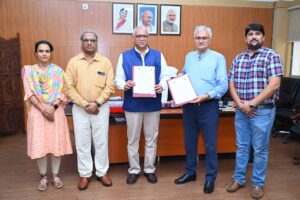
Kullu Dussehra: On October 12, India celebrated Dussehra, a festival that symbolizes the triumph of good over evil. This occasion was marked by grandeur across the country, showcasing various traditions that reflect India’s rich cultural diversity.
Among the many celebrations, the Dussehra event in Kullu, Himachal Pradesh, stands out as one of the most iconic and unique festivals. Known as the “International Dussehra,” this event attracts people from all parts of India and draws tourists from around the globe.
The festivities commence on October 13 and continue for a week, offering a blend of religious devotion, cultural activities, and historical significance. Let’s explore the fascinating details of how this distinctive Dussehra is organized and celebrated.
Unlike Dussehra celebrations in other parts of India, where the effigy of Ravana is burned to signify Lord Rama’s victory, Kullu Dussehra begins with a grand Rath Yatra (chariot procession). This procession is dedicated to Lord Raghunath, a form of Lord Rama, marking the start of the week-long festival.
On Vijay Dashami, the chariot carrying the idol of Lord Raghunath is pulled by devotees through the streets of Kullu, accompanied by over 300 local deities and goddesses. This tradition of the Rath Yatra dates back more than 350 years and forms the heart of Kullu’s Dussehra celebrations.
The Legend Behind Kullu Dussehra: The origins of Kullu Dussehra are steeped in mythology and history, tracing back to the reign of King Jagat Singh in the 17th century. According to legend, a poor Brahmin from Tippri village in the Manikaran Valley was wronged by the king, leading to a tragic misunderstanding that resulted in the Brahmin taking his own life. The king was said to have been cursed after this event, suffering from an incurable disease.
In search of a remedy, the king consulted a wise sage who advised him to bring the idols of Lord Ram, Sita, and Hanuman from the Tretanath temple in Ayodhya. The sage instructed that if the king dedicated his entire kingdom to Lord Raghunath, he would be absolved of his sin and freed from the curse.
Following this advice, the king retrieved the idols and installed them in the Manikaran temple in 1653. Seven years later, in 1660, the idols were ceremoniously moved to the Raghunath temple in Kullu, marking the beginning of the annual Dussehra celebrations in honor of Lord Raghunath. The king’s health was restored, and since then, Kullu has celebrated Dussehra with deep reverence for Lord Raghunath.
A Showcase of Cultural Diversity: Kullu Dussehra is renowned not only for its religious significance but also for the cultural spectacle it offers. The festival begins with the arrival of the revered deity, Mata Hadimba, and the celebrations continue for a week. During this period, Kullu transforms into a vibrant hub of cultural performances and activities.
Folk dance troupes from various Indian states, along with international cultural groups, participate in the festivities, showcasing their unique traditions and performances. This fusion of local and international art forms creates a mesmerizing atmosphere, drawing crowds from across India and beyond.
This cultural extravaganza is an integral part of the festival, reflecting the unity in diversity that India is known for. Visitors are treated to a series of traditional music and dance performances, with artists dressed in colorful costumes presenting folk dances that depict local legends, rituals, and customs.
A Celebration Like No Other: Kullu Dussehra is a festival that transcends the typical Dussehra celebrations observed in other parts of India. It is not just about the destruction of evil but also a tribute to Lord Raghunath, the presiding deity of Kullu. The festival offers a glimpse into the rich cultural heritage of Himachal Pradesh, presenting a unique blend of devotion, history, and celebration. With its grand Rath Yatra, fascinating folklore, and cultural diversity, Kullu Dussehra continues to captivate visitors from around the world, making it an international event worth experiencing.







